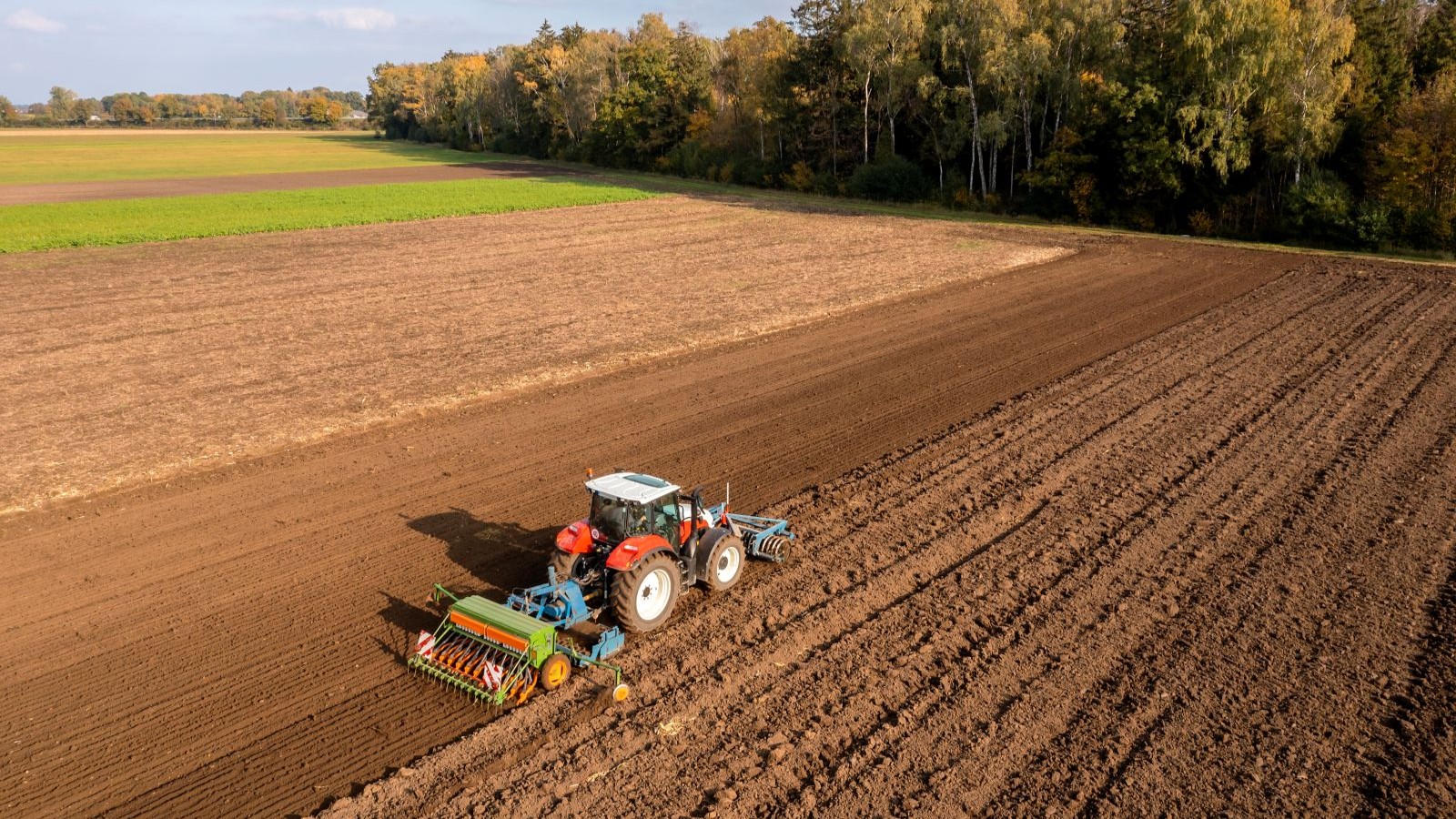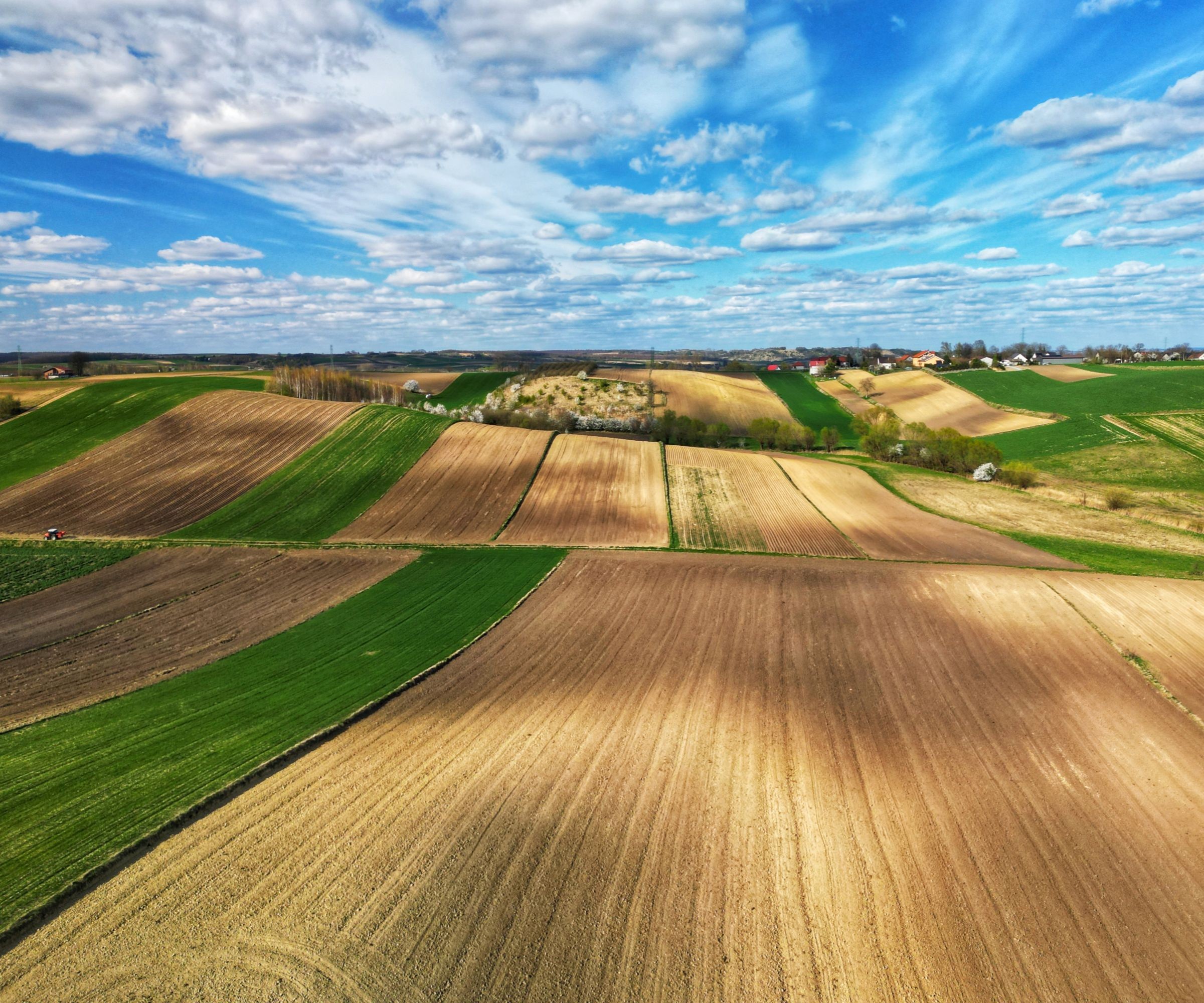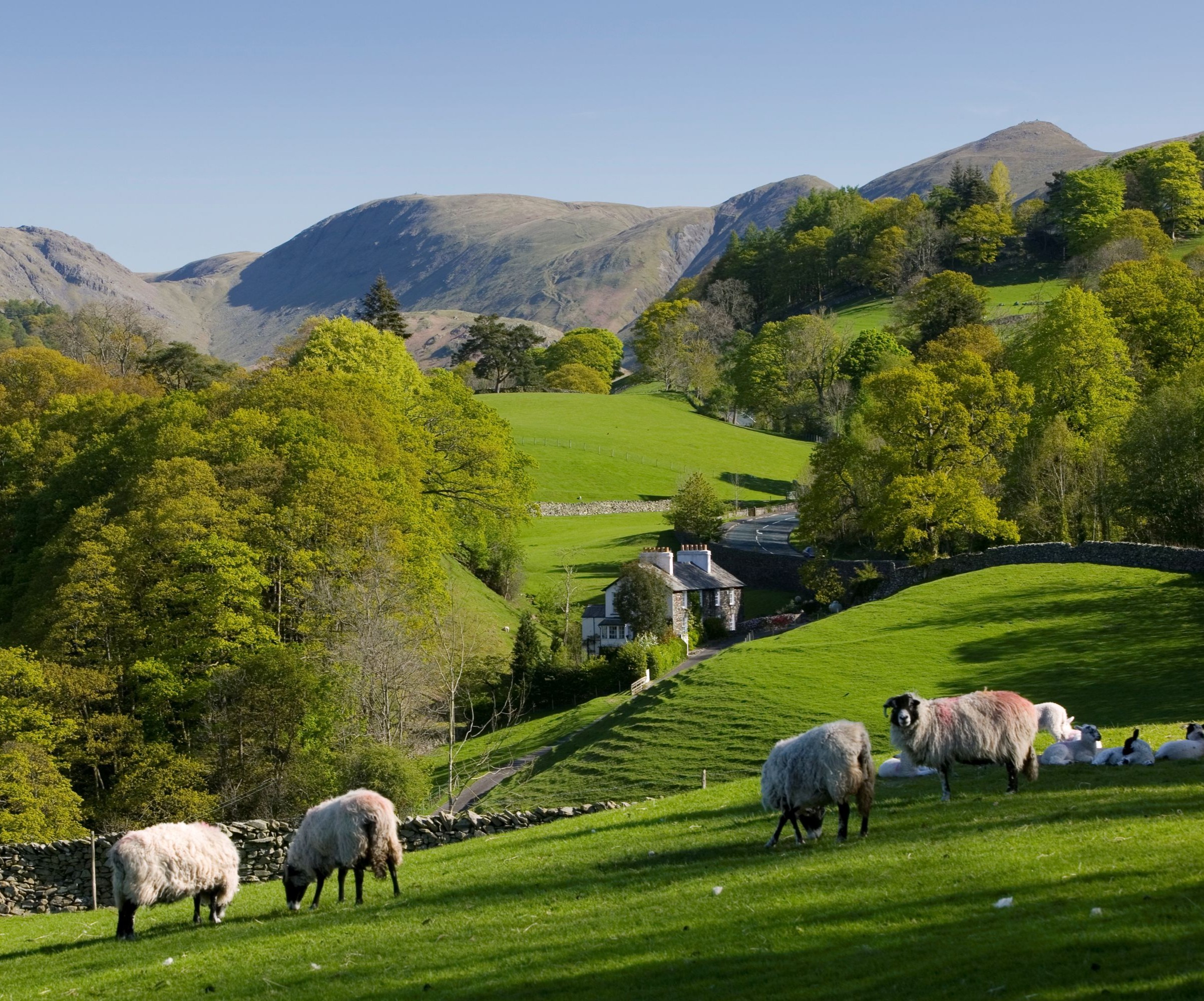Can you build a house on agricultural land? Sometimes says a self build expert, but here's why it can be a bit tricky
A self build expert details what you need to consider if planning to buy farm land to build on, including if and when it is possible

For many self builders, the idea of swapping the urban hustle and bustle for rolling green fields, fresh air, and endless views is very appealing.
When you start hunting for land, if this is your dream, it doesn’t take long before agricultural land pops up on your radar. Farmland is cheap, in plentiful supply and on the face of it, full of potential.
But there’s a catch as agricultural land has development restrictions. So, can you build a house on it? The answer is not easily, and this article explains why.
Agricultural land defined
Put simply, agricultural land is land used for farming crops, livestock, or other forms of food production. Agricultural land is considered a vital national resource, and planning policy is designed to protect it.
It's graded from 1 (excellent) to 5 (very poor), with Grade 1 and 2 land considered "best and most versatile” and is especially safeguarded. In practice, though, when most people talk about building on “agricultural land,” they’re really talking about fields in the open countryside – cheap, scenic land far away from towns and villages, which is the crux of the problem.
Agricultural land almost always sits outside what planners call the “settlement boundary.” These boundaries define the extent of settlements and are used to protect rural land and prevent urban sprawl. Land that sits outside of this line is designated as open countryside – and the rules for developing it are far stricter. Even if the land appears empty or unused, under planning policy the presumption is against residential development.
When can you get planning permission?
To build a house on agricultural land, you’ll need planning permission and specifically, a change of use from agricultural to residential.
Bring your dream home to life with expert advice, how to guides and design inspiration. Sign up for our newsletter and get two free tickets to a Homebuilding & Renovating Show near you.
Securing this consent is not easy. Local planning authorities (LPAs) are bound by national and local policies, most of which restrict building in the open countryside, unless there’s a strong justification.
Planning departments will assess applications in detail. They’ll consider the visual impact on the rural landscape, whether the location is sustainable (i.e, close to shops, schools, and services), and whether infrastructure like roads and footpaths are available.
Most applications are refused because they don’t meet these criteria and planners will look to uphold planning policy intended to prevent encroachment of development. This means that even if you think find a plot that looks ideal for a home, without a compelling reason for building there – such as a genuine agricultural need – the chances of gaining consent are slim.
Assuming this hasn’t put you off, and you still want to build in the open countryside, there are still a few approaches worth considering.

Class Q permitted development
Class Q permitted development rights allows certain agricultural buildings to be converted into dwellings and is popular with self builders looking to build something unique.
However, Class Q isn’t a magic shortcut as it only applies to buildings that were in agricultural use on or before 20 March 2013. The structure must also be capable of conversion without major reconstruction – so only barns in a reasonable condition are suitable, and falling-down sheds should be avoided.
Consent for a class Q barn conversion, is known as a “prior approval.” The process is slightly different to applying for full planning application for say a new home, but the council will still assess key issues like access, design, noise, and environmental impact.
There are strict limitations when it comes to Class Q and it doesn’t apply in areas like National Parks, Areas of Outstanding Natural Beauty (AONBs), Green Belts, or Sites of Special Scientific Interest. Crucially, you can’t build a new home under Class Q – you can only convert the existing barn, so if there’s no building already on site, this route isn’t an option.
Exception opportunities
While planning rules are strict, they’re not totally inflexible and in some cases, LPAs may support development on agricultural land if it meets certain criteria.
Some councils have “rural exception site” policies that allow limited housing on land adjacent to sustainable settlements – villages with basic amenities like a shop, a school, or a bus route. These policies are usually intended to meet local housing need, so you’ll need to demonstrate that it meets a set criteria and is a good option.
In some places, infill development may be allowed, particularly if the infill plot sits between two existing houses and fills a small gap in an established settlement. This depends entirely on the local planning policy and whether the settlement is considered sustainable.
There’s also the option of building an agricultural worker’s dwelling. If you can prove that someone employed full-time in agriculture genuinely needs to live on the site for the business to function, you might be able to get permission. These homes come with what’s known as an “agricultural tie,” and so are not suitable for general housing. Because they’re restricted to agricultural workers, lenders consider them less valuable, which might mean the numbers don’t stack up.
One of the more ambitious options is to apply for permission under Paragraph 84 of the National Planning Policy Framework. This allows isolated new homes in the countryside if they are of truly exceptional architectural quality. The bar is high – the home must be innovative, sensitive to its setting, and raise standards of design. These applications are rare, expensive, and often refused, so don’t get too excited. But for the right plot and deep enough pockets, it can be done.
Influencing planning decisions
When planners assess a proposal, as well as looking at the plot itself, they’ll also consider the wider picture – how your scheme aligns with housing needs, local priorities, and national planning objectives.
Self builders can point to wider planning policies such as the right to build legislation or government policies for increasing housing supply and delivering homes where they’re genuinely needed.
Some councils are grappling with shortages of affordable homes, or housing for key workers, and in some cases, planning applications on agricultural land have been approved on appeal because they helped meet those needs, particularly where brownfield land wasn’t available.

Right to build legislation
The Right to Build legislation can potentially give greater weight to self build applications. The legislation requires LPAs to keep a register of individuals and groups interested in building their own home.
If the council is under pressure to meet self build demand, by demonstrating that there’s an undersupply of plots, they could be encouraged to support rural applications for self builds, including edge-of-settlement sites.
Agricultural land to avoid
Unfortunately, the countryside dream has spawned a host of dodgy land sale schemes so don't make this plot buying mistake.
Be extremely wary of plots carved out of fields and marketed with phrases like “subject to planning” or “future development potential.” These are often classic land banking schemes, where the the chance of securing consent is minimal and the only real objective is to inflate the value of agricultural land by selling it as small plots.
Strategies that involve mobile homes or temporary buildings should also be avoided.
It’s often suggested that by placing a static caravan or log cabin on the land, the principal of residential development is “established” and can then be used as the justification of a permanent consent. In reality, councils are very alert to these tactics and and won’t allow temporary buildings to become open market housing.
If you get planning consent on agricultural land
If you do manage to secure planning permission, either through an exception policy, agricultural tie, or barn conversion. What then?
One of the first things to think about is services. Agricultural land is rarely connected to the mains, so you’ll likely need to go off-grid – or at least semi-off-grid. This means installing solar panels, PV’s, battery storage, along with heat pumps.
You’ll also need to manage waste, typically via a sewage treatment plant or septic tank, which must comply with Building Regulations and be properly maintained. Water might also need to come from a borehole or private supply and could require treatment. None of this is impossible – but it adds cost and complexity, and whilst off-grid living can be liberating, it’s not for everyone, and could impair plot values and mortgageability.
So, it is possible to build on agricultural land, but only in specific and tightly controlled circumstances. For the average self builder, it’s unlikely to be the easiest or most straightforward route as securing planning permission is hard.
But that doesn’t mean it’s impossible and with the right approach, a compelling case, and a realistic understanding of the planning system, it is possible to succeed.
Whether that’s through a Class Q barn conversion, rural exception site, or even a Paragraph 84 home of exceptional architectural quality.
So, if you’re serious about building on agricultural land, do your homework and seek professional support. The countryside can be a wonderful place to live – but getting there is rarely simple. Alternatively, take at these other suggestions for finding a plot and make sure you have enough money set aside for the real costs of building a house.
Mark Stevenson has worked as a construction professional for over 30 years and following an extensive career in housebuilding. He is currently chief operating officer for Custom Build Homes and chair of the National Custom and Self Build Association. He previously worked as managing director for Potton, helping self builders build their own homes.
Whilst Mark describes himself as a ‘professional builder’ as a result of his career in housebuilding and timber building system manufacturing, he has specialist knowledge of timber construction and extensive expertise in finding land and project management.
He regularly shares his knowledge at Homebuilding & Renovating Shows and and coaches self builders about how to build their own homes. Aside from Mark’s professional career, his skills also extend to practical building knowledge as a skilled joiner, hands-on renovator and serial self-builder of his own development projects.
He is also Vice Chair of industry body, the Structural Timber Association.

